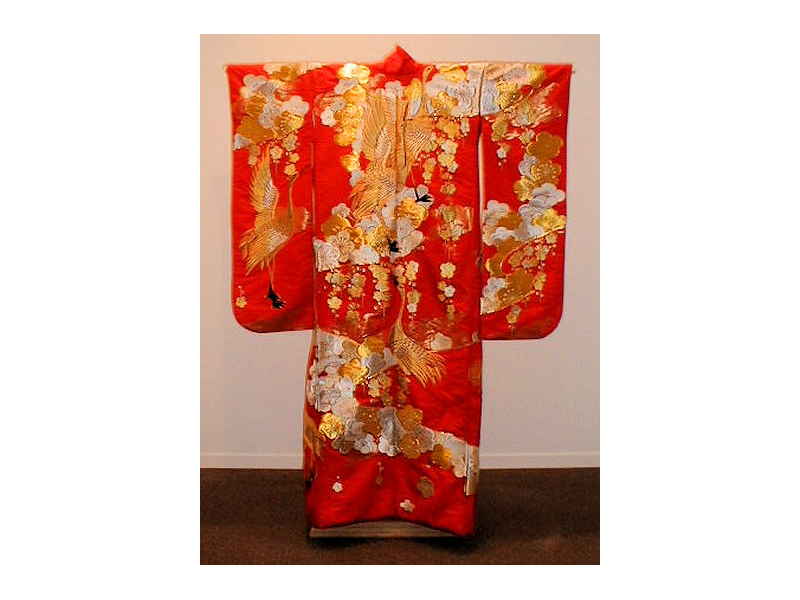About traditional Japanese kimono, and obi.
Kimonos date back to 300 A.D. (the Jomon period) and were were made of hemp. The Chinese introduced the raising of silk worms to Japan in the Yamato period (300 – 550 A.D.) Dyes and sewing techniques improved in the Asuka and Nara periods ( 550 – 792 A.D). The kimono became longer and more elaborate with added jackets and back and front skirts.
In the Heian period (792 – 1192A.D.) the colours changed with the seasons. In the Muromachi period (1192 – 1573) there was a decline in the aristocracy as the Samurai gained power. With the more active lifestyle, the clothing became simpler.
During the Edo period (1601 – 1867) Yuuzen resist dye techniques were developed. Complex patterns such as flower and bird motifs became popular. In resist dyeing, a rice-past resist is used. As the dye is brushed on, the resist protects other areas of the fabric, keeping the dye inside its border. Several layers of colour can be applied using this technique.
Japanese Kimono on Exhibit at Textile Museum of Canada
Clothing Patterns from the Weaving Room
A book filled with patterns you can sew easily with your handwoven fabrics.
EBAY Kimono
KIMONO FABRIC US
KIMONO FABRIC UK
 LONGTHREAD MEDIA VIDEO
LONGTHREAD MEDIA VIDEO
 LONGTHREAD MEDIA SUBSCRIPTIONS
HANDWOVEN MAGAZINE
PIECEWORK MAGAZINE
SPINOFF MAGAZINE
LEARN LONGTHREAD MEDIA
PAIVATAR HANDMADE
LONGTHREAD MEDIA SUBSCRIPTIONS
HANDWOVEN MAGAZINE
PIECEWORK MAGAZINE
SPINOFF MAGAZINE
LEARN LONGTHREAD MEDIA
PAIVATAR HANDMADE
 Paivatar on YouTube
Visit my YouTube channel for how-to craft videos.
Paivatar on YouTube
Visit my YouTube channel for how-to craft videos.
Or Please visit my Channel on Rumble for more how-to videos.
https://rumble.com/Paivatar
LIVE STREAMS - Paivatar Studio
KICK
TWITCH MAKERS&CRAFTING
YOUTUBE
Categories: Heritage Crafts, Kimono, STITCHING, Videos






